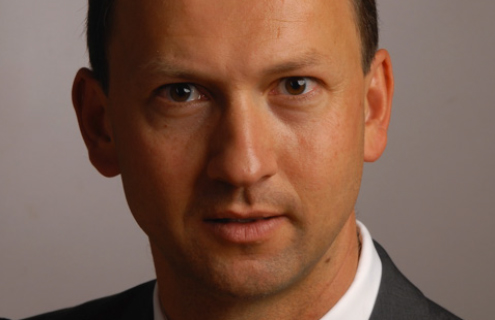Comyno
Markus Büttner of Comyno reveals what his company is working on and outlines the most pressing challenges of the moment
As a consultancy firm, what areas are your securities finance clients most concerned about currently?
Without surprise it is the still consistently upcoming regulatory aspects that are in the focus of most of our clients. This proves to be an ongoing task, given that regulation is not yet finalised and is presenting itself as a moving target.
Looking into upcoming regulatory requirements we see a strong interest in supporting the second Markets in Financial Infrastructure Regulation/Directive (MiFIR II/MiFID II) reporting and solving the upcoming reporting requirements. MiFID II transaction reporting and the MiFID II over-the-counter (OTC) trade reporting requirements need to be implemented.
With Comyno being focused on securities finance, the securities finance transaction requirements are also high on our customers’ agenda—both from a business process perspective and also solving it technically.
Nevertheless, institutions need to receive returns within this space of regulation and we are helping them to navigate that challenge.
Other than those areas, we currently also see demand, and are actively involved in, optimising the usage of collateral. Of course, this is mostly triggered again by regulation and the subsequent needs and quality requirements. On all sides Comyno is in the strong position to support its clients not only as a consultancy but also as a provider of technical solutions utilising our C-One software platform.
What specific aspects of the SFTR are proving the most difficult? How are you going about solving those issues?
Of all of the Securities Financing Transaction Regulation’s (SFTR) requirements, our clients often struggle with the identification of notifiable trades and the identification of reportable transactions occuring in portfolios, along with the decisions on the ideal technical implementation. We help them to decide if they want to roll out specific systems such as Comyno’s C-One software platform, which supports all the required messages, or to extend existing infrastructure.
How are you helping your clients to optimise collateral usage?
Collateral optimisation is, even more than our work on strategic topics, a matter of scientific work. The problem to solve, obviously, is to find, categorise and centralise all available assets in an institution that in any way could be given as collateral.
Collateral optimisation techniques are important now and will grow in future as the securities finance market and its regulatory guidelines are still a subject to change. We help institutions to get better returns by automation of the allocation process and minimise the cost of collateral.
The focus is on maximisation of the liquidity capacity of the given inventory and minimisation of the funding costs by identifying the ‘optimal’ collaterals from the remaining inventory.
We help institutions to handle daily and future exposures in a single optimisation run to cover exposures, meet the given regulatory and bilateral collateral requirements and finding solutions for implementing complex trading agreements and collateral schedules in one system to be more efficient.
Our services here start off with a strategic analysis of the portfolio and the exposures, to identify if there is a possible upside by optimising collateral, and if so, how big it could be. Given a positive business case, we drive the project from the RFP, covering business analysis such as determining cost functions and most efficient workflows, down to the technical implementation and configuration.
Honestly, when we are called into a project that is already in progress but not in a good shape, we often find, in my opinion, over-engineered approaches trying to reach the absolute allocation optimum. In reality, it seems, that with far less effort, institutions would be able to gain the famous 80 percent of the benefits much quicker, but they are lacking the transparency about it not having done the math before.
Has this focus area shifted from last year?
Partially, yes. Interestingly, we are finally working with some of our clients on growth strategies again. We particularly look at how to turn the burden of legislation into new business opportunities. Be it with newly designed products, innovative service offerings or optimisation efforts—that depends on the current setup and possibilities the organisation could provide to the market.
Can you give some examples so we can see where some of these growth opportunities are arising?
When talking about finding opportunities, there are obviously different aspects to the topic: from broadening the landscape of customers and platforms you’re trading with, for example, having a look at corporates and their needs. Most market participants should be able to trade with them. If not bilaterally, there is the central counterparty (CCP) route. In both ways, we are helping by ‘connecting’, and this means of course technically, but sometimes also personally. As a result, customers reduce their credit risk and have additional returns with the ability to source liquidity from others than the usual sources.
Next is triparty business. Look at the setups of your collateral schedules—do they need to be revised to make trading easier or more efficient? Could you be more flexible with your term structures by using evergreen structures both on the repo side as well as the stock loan side?
Everyone knows that certain structures still make money, but not everyone has the processes and infrastructure in place throughout the bank’s whole value chain to really support them.
We see growth in the integration of treasury, fixed income, stock loan, proprietary trading and collateral management to be more efficient and to meet the regulatory needs now and in future business. By also supporting CCPs and triparty agents in establishing new products and optimising given processes, we are in the unique position to offer the best possible services for our clients in identifying and establishing new initiatives.
Between your IT and consultancy services, which have you seen more demand for from your clients recently?
Demand in both is strong. As our expertise covers both regulation and growth strategies through automation, customers value the synergies they have by getting excellent business know-how and state-of-the-art software out of one hand.
A desire to increase the volume of automated lending is high on the industry’s agenda at the moment. How does Comyno’s C-One offering assist with this aim and how does it stand out from the other products out there?
From the very start, C-One was designed to specifically increase straight-through processing in securities finance by serving as a central hub to different trading platforms, CCPs, triparty agents and custodians alike. While other software platforms consider this connectivity to be the customers’ problem, to be solved with proprietary interfaces and own IT resources, Comyno considers automation of this ever increasing network of market participants our mission, for the benefit of our industry. ‘Fintech made in Germany’ is not only a slogan, but a commitment.
C-One has a specific MiFID element to its offering. Will this be extended to assist with the various other regulations that are coming into force over the next few years?
Indeed, our developers focus on broadening the regtech aspect of C-ONE and will be providing solutions for various other regulations. We are currently looking into the technical regulation standards for the upcoming MIFID II reporting and securities finance reporting and are working on an extension of our C-One offering to minimise the burden for our clients in this respect.


